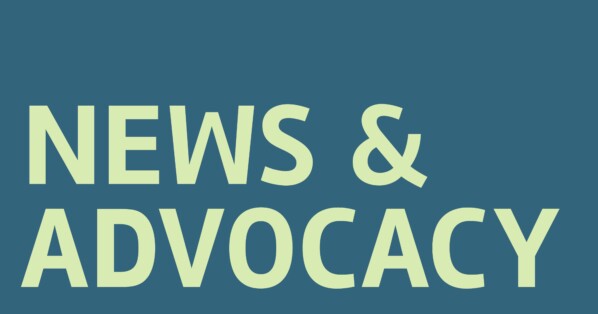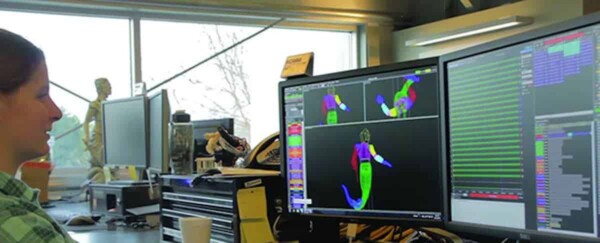
The federal government is working to identify and encourage women, minorities, and veterans to secure patents for their innovations, but skeptics say the patent process itself needs to be fixed first. The effort to gather data on underrepresented groups, encourage them to innovate, and track the results is known as the SUCCESS Act. The acronym reflects the federal legislation that started the initiative: the Study of Underrepresented Classes Chasing Engineering and Science Success Act of 2018.
Because the patent office does not collect demographic data during the patent application process, it is difficult to accurately determine the numbers. But an analysis released in February 2019 revealed that the number of patents with at least one woman inventor stood at 21% in 2016, up from 7% in the 1980s, according to the U.S. Patent and Trademark Office.
Laura Peter, J.D., deputy director of the patent office, said in an emailed statement that to implement the SUCCESS Act, the office has “undertaken a proactive approach to encourage women, minorities, and veterans to innovate and secure patents to protect their innovations.”
This takes place in a number of ways. “We provide guidance and assistance to inventors, host annual events such as our Invention-Con and Women’s Entrepreneurship Symposium, support pro bono networks around the country, offer pro se assistance to make navigating the patent process more accessible (especially to first-time applicants), and have free legal services through 60 participating law school clinics,” Peter said.
“We also have four regional offices to help make the IP [intellectual property] system and the [patent office] more accessible to inventors, entrepreneurs, and small businesses throughout the country,” she added. “Also, our Patent and Trademark Resource Centers are located in more than 80 public, state, and academic libraries — many in minority and underserved communities. These centers offer regular programming, virtual office hours with [patent office] subject-matter experts, and librarians trained to assist with intellectual property research.”
Underrepresentation is part of a larger issue
A series of public hearings regarding the Success Act exposed issues that point to a much bigger problem, however. Skeptics and critics, including women and underrepresented minorities, say that despite the act’s best intentions, a 2011 federal law changed the patent system to make it virtually impossible for small businesses and independent innovators to keep the patents they worked so hard to obtain.
Among the groups submitting comments, US Inventor, a nonprofit representing 13,000 individual inventors and small businesses, pointed out that the current patent process “virtually precludes success” for all underrepresented patent owners. “Instead of providing a chance for underrepresented and underprivileged individuals to move up the social ladder, involvement in the patent system is more likely to drag them into unwinnable battles that will drain their life savings and leave them utterly destroyed,” the group said, urging the USPTO to include more protections for independent inventors.
The 2011 law was designed to fight patent trolls — companies that make money on patent-infringement lawsuits by acquiring patents cheaply and then charging licensing fees to other businesses and people who appear to infringe on those patents. But it turned out to be much more. At the center of the controversy is the establishment of the Patent Trial and Appeal Board, or PTAB, which, during the American Intellectual Property Law Association annual meeting in 2013, Randall Rader, J.D., a former Federal Circuit chief judge, labeled “a death squad” for killing property rights.
Lawyers disagree whether the PTAB offers a fair hearing. But critics point to the fact that the administrative patent judges who serve on the PTAB are unrestrained from any code of judicial conduct and have ruled on cases involving former clients.
Carrie Hafeman, an inventor and founder of two companies, said her 10 patents covering computer and electronic-device security are “extremely difficult to assert” because big technology companies have usurped her innovation without licensing it. The tech companies often preload her patented features into smartphones, laptops, PCs, tablets, and even watches, she said.
She said she has been unsuccessful even trying to amicably license or sell her patents because of the U.S. patent situation and PTAB controversy. That’s despite her early successes, including first applying for a patent in 2002; placing No. 1 among 175 startups in a 2011 Vator Inc.-sponsored competition for her computer-security product invention; and initially counting among her security-product clients such major retailers as Staples and OfficeMax, as well as UCLA, the University of Southern California, Cornell University, Johns Hopkins University, and others.
“The PTAB department re-reviews patents that [the patent office] has already issued — and often years later — to see if they should have given the inventor a patent in the first place,” said Hafeman, whose elder daughter is an environmental engineer and younger daughter a biochemical major.
“This not only hurts Current inventors in this country but hurts all kinds of companies that could be created, as well as investors, shareholders, and employees.”
– Carrie Hafeman, inventor, founder of two companies
“When the PTAB eliminates U.S. patents already issued, this allows not only U.S. companies to copy ideas from U.S. inventors and willfully infringe their patents, but also foreign companies now get a green light to copy the U.S. inventor’s ideas,” she said.
“This not only hurts current inventors in this country, but [hurts] all kinds of companies that could be created, as well as investors, shareholders, and employees,” Hafeman said. “This hurts and discourages American innovation and impacts young future inventors in this country.”
After a SUCCESS Act public hearing held May 8, 2019, at the patent office’s headquarters in Alexandria, Virginia, 20 of the women, minority, and veteran inventors who testified wrote a letter protesting that their concerns were relegated to an appendix and excluded from the patent office’s final legislative report.
The inventors and patent holders had testified that they foresaw huge obstacles to enforcing their patents; risks of their patents being invalidated by the PTAB that the 2011 law created; and they feared that big companies will deliberately choose to infringe their patents because it’s cheaper to do so than to license the patents.
Peter, through a spokesperson, declined comment on the patent process controversies or the effects of the 2011 legislation.
Despite the controversies
The critics say they remain hopeful that proposed new legislation may improve the situation.
The bipartisan proposal (H.R. 5478) is sponsored by U.S. Rep. Danny Davis, Ph.D., D-Ill., and U.S. Rep. Paul A. Gosar, D.D.S., R-Ariz.
Dr. Davis, a 24-year veteran congressman from Chicago, posted on his website that the proposed law would let inventors who own their patents opt out of PTAB. “Accused infringers will have the right to challenge validity [of a patent] in a regular court of law, which is how the U.S. patent system worked for our first 190 years [prior to the 2011 legislation],” according to the website.
In an interview, Dr. Davis said, “Some of [the inventors] are so frustrated. They swear to high heaven they’ve seen their hard work and creative ingenuity just zapped [by major companies].”
“We think the legislation — if we ever get it passed, and even in the process — allows a chance to talk about the issue,” Dr. Davis said. A resolution supporting the Davis-Gosar legislation can be found at https://www.usinventor.org/inventor-rights-act/.
Amid the uproar, SUCCESS Act proponents say there’s one positive: the increased collection of demographic data among those who participate in patenting and trademarking. “Done right, this step can help federal agencies conduct outreach and provide resources to increase women’s participation in STEM fields, translate their experience and knowledge into patentable opportunities, and start ventures,” said Andrew Morse, assistant to the president for board and governmental relations at the University of Northern Iowa.
That could translate into billions of dollars in economic growth. The USPTO’s own “Intellectual Property and the U.S. Economy: Industries in Focus” study found that IP-intensive industries directly and indirectly support 45.5 million jobs — nearly one-third of all U.S. employment — and the share of total U.S. GDP (gross domestic product or the value of a country’s economic activity) attributable to IP-intensive industries is about 40 percent ($6.6 trillion).
If just 1% of the 250,000 women who graduate each year with science and engineering degrees received patents, that would translate into 75,000 women in total, and 7,500 black women, says Erika Jefferson, a chemical engineer and president and founder of Black Women in Science and Engineering (BWISE). “Estimating the financial benefits would be very difficult, but based on the patents granted today, it would most definitely be in the billions of dollars,” she said.
Jefferson said her awareness was heightened when she worked on a Feb. 22, 2020, celebration of the life and achievements of the late Patricia Bath, M.D., the first African American to complete a residency in ophthalmology, at New York University, and the first black female doctor to receive a medical patent. Dr. Bath invented the Laserphaco Probe to treat cataracts in 1986. She worked as an assistant professor of surgery at Charles R. Drew University and at UCLA and, in 1975, she became the first female faculty member in the department of ophthalmology at UCLA’s Jules Stein Eye Institute.
The SUCCESS legislation also aims to expand the use of grant funds for activities that promote invention and entrepreneurship among women, minorities, and veterans. To do that, women’s advocates need to work closely with the patent office to make sure those funds have the greatest impact, Jefferson said. “My plan is to be an advocate,” she said. “It is critical that [the patent office] implement much-needed changes with the data it collects.”
Sources
https://www.uspto.gov/sites/default/files/documents/Progress-and-Potential.pdf
https://www.uspto.gov/sites/default/files/documents/SUCCESS-Act-transcript-Alexandria-VA-050819.pdf
SUCCESS Act Comments Are In: Access, Enforceability, Predictability Concerns Underscored
“Increasing the Diversity of Patent Recipients” was written by Sandra Guy, SWE Contributor. This article appears in the 2020 State of Women in Engineering issue of SWE Magazine.







